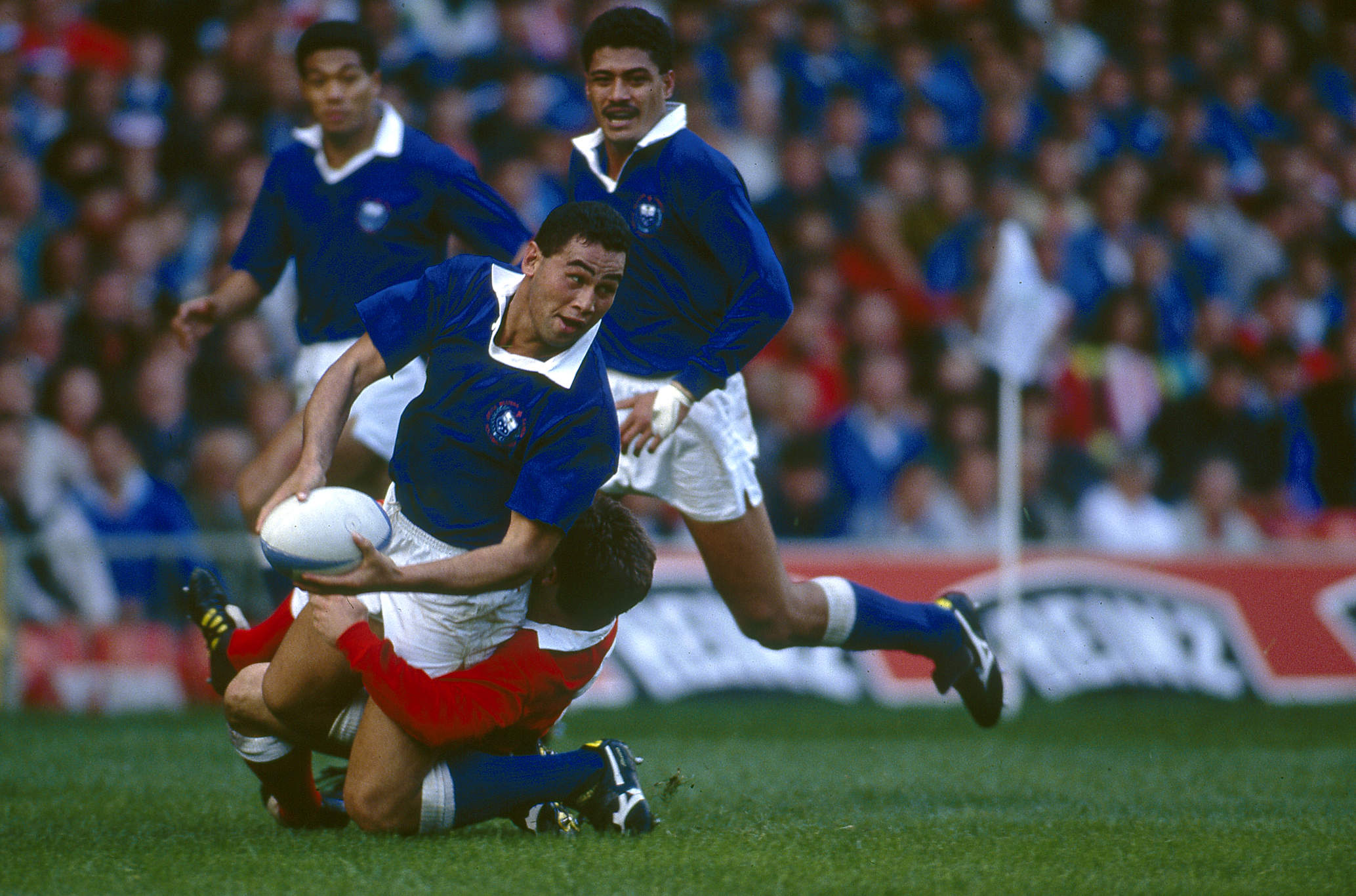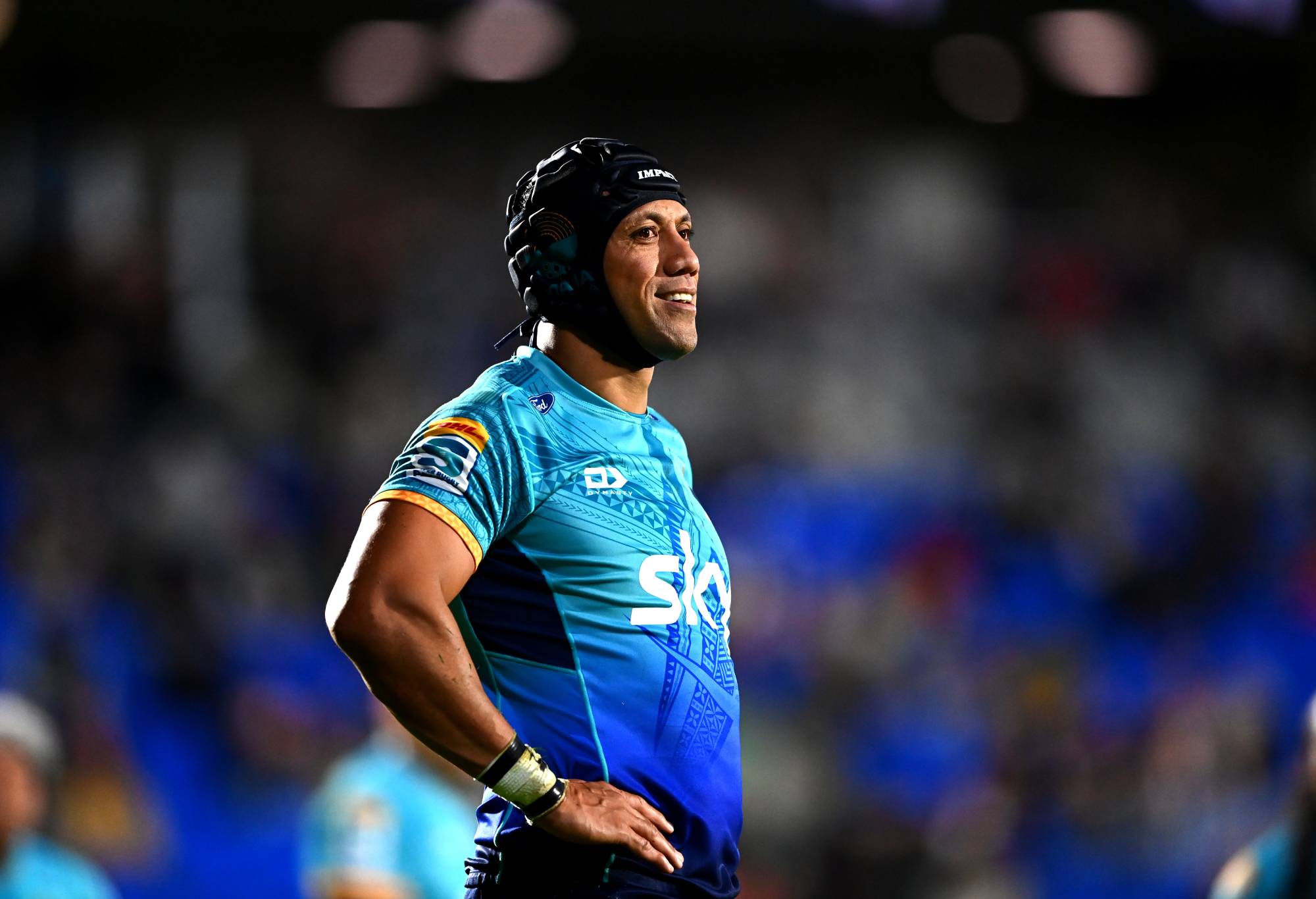COMPILATION: Eddie's best press conference moments from St. Etienne open training
Eddie Jones, Will Skelton and Carter Gordon talked about a lot of subjects after their first open training session, ahead of their first World…
Join The Roar
Become a member to join in Australia's biggest sporting debate, submit articles, receive updates straight to your inbox and keep up with your favourite teams and authors.
Oops! You must provide an email address to create a Roar account
When using Facebook to create or log in to an account, you need to grant The Roar permission to see your email address
By joining The Roar you agree to our Privacy Policy and Terms & Conditions
Login and get Roaring
Oops! You must provide an email address to create a Roar account
When using Facebook to create or log in to an account, you need to grant The Roar permission to see your email address
When Western Samoa* upset Wales 16-13 in their first Rugby World Cup match at Cardiff Arms Park on October 6, 1991, the local joke was, “Western Samoa, lucky we didn’t play the whole of Samoa.”
The result was a seismic shock. Samoa wasn’t even invited to the inaugural Rugby World Cup in 1987 and didn’t play a single Test match that year. Third in 1987, Wales was subsequently bundled out in the group stage in 1991.
In the Samoan capital Apia, a national television network didn’t exist, so a group of New Zealand entrepreneurs set up seven giant screens at the National stadium. Eight hours before kick-off 15,000 spectators had filled every available space. Many refused to move for a toilet break fearing they would lose their spot. Samoan rugby had arrived.
Auckland was unstoppable when Sir Bryan Williams and Maurice Trapp were coaching. Between 1987 and 1991 Auckland won a phenomenal 86 out of 90 matches. A restless Williams harboured ambitions for the All Blacks job but with a logjam of candidates, his goal would never be realised.
At Williams’ beloved Ponsonby club, piano mover Peter Fatialofa was a charismatic and considerable prop. When Fatialofa declared his availability for Samoa it whet Williams’ appetite to be involved with the country of his origin. When Williams’ dad passed away in 1990, fate was sealed.
“I was asked by the head of state Malietoa Tanumafili II to get involved. I thought about it relatively briefly before accepting the honour,” Williams said. “Dad never saw Samoa play when I was coach, but it was a source of great pride to him that I was part of it.”

Samoa’s Pat Lam in their 1991 Rugby World Cup match against Wales. (Photo by Mark Leech/Offside/Getty Images)
Samoa had already qualified for the 1991 World Cup when Williams came on board. He’d guide the team with former Test first-five Peter Schuster. Williams knew Samoa could be competitive when they competed at the Toulouse Centenary Masters in 1990. Samoa was invited to compete by entrepreneur and Williams’ former All Blacks teammate Andy Hayden.
“We played a really strong Queensland team in the quarterfinals. Greg Martin kicked a drop goal from halfway to beat us,” Williams said.
“In 1991 I watched Australia play Wales and to be frank Wales were awful. By contrast, we had some strong players who’d become world-renowned. Our forward pack wasn’t world-class, but they worked hard. Peter Fatialofa was an inspirational captain and Pat Lam would follow. We had a great backline with the likes of Stephen Bachop, Frank Bunce, Timo Tagaloa, Brian Lima, and To’o Vaega.”
Wales conceded 134 points in the last two matches of their 91 Aussie tour – 71 to New South Wales and 63 to Australia – and Welsh players had brawled among themselves at the dinner following the international. Samoa wasn’t well-resourced but the leadership of La’auli Alan Grey and “wheelbarrow collections” around the Islands ensured the team was supported adequately in the Northern Hemisphere.
Samoa rocked Wales with their brutal physicality on their World Cup debut, and despite an inferior scrum, held Wales to 3-3 at halftime. Tony Clement, Phil May, and Richie Collins were famously put out of commission by ‘The Terminator’ Apollo Perelini. Perelini dislocated the shoulder of May when the Llanelli lock ran smack into him; he wrenched the shoulder of flanker Collins with another jolting shot; and he left Clement with a bruise extending from the top of his leg to his ribcage.

Jonathan Taumateine. (Photo By Harry Murphy/Sportsfile via Getty Images)
In the first minute of the second half, Samoan centre To’o Vaega kicked ahead and chased side by side with Robert Jones for the touchdown. The Welsh halfback got to the ball first, but French referee Patrick Robin blew his whistle and awarded a try when everyone expected a 22-metre drop-out. Contentious call? With a superior lineout and a more enterprising backline Samoa deserved their lead. Their second try came from a sustained period of attack, with flanker Sila Vaifale (28 Tests) eventually scoring.
As Samoa tired, Wales rallied with tries scored by Arthur Emyr and Ieuan Evans, but the more accurate boot of Silla Vaifale (two penalties and a conversion) proved telling, Samoa victors by three.
“There was stunned silence at the full-time whistle. I remember before the game we had an opening training session, and nobody showed up. The next week we could hardly move. Back home people only went home when they had to go to church,” Williams recalled.
“I never had any fear we’d lose the match. It always felt like we had it under control or had the backs to hurt them.”
Welsh Coach Alan Davies conceded at the time, “We thought we could match them for strength, but we certainly came off second best.”
Eventual champions Australia almost suffered the same fate. Only three Michael Lynagh penalties kept the Samoans at bay in a bruising 9-3 victory. Samoa comfortably dispatched Argentina 35-12 to reach the quarters but a red card to flanker Mata’afa Keenan hurt them. Scotland convincingly eliminated Samoa 28-6. Remarkably Samoa only used 20 players in four games with six backline players and five forwards appearing in 80 minutes of all games.
Peter Schuster said afterward, “My greatest satisfaction was seeing the great respect the team earned for the Samoan population back home, those living in New Zealand and actually, from New Zealanders themselves.”
The legacy of the 1991 team stretched beyond Samoa. Tevita Sio is the father of Wallabies prop Scott Sio. Vili Ala’alatoa had Allan (Australia) and Michael (Samoa) play international rugby. Though he didn’t play in any games, Feleti ‘Freddie’ Tuilagi was the first in what was to become a long line of Tuilagi brothers to play internationally with Henry, Alesana, Anitelia, and Manu having all played Test football. Williams’ sons Gavin and Paul played for Samoa.
Samoa returned to the quarters in 1995, losing to eventual champions South Africa. In 1999 they again upset Wales (38-31) under the captaincy of Pat Lam to reach the last eight.
Already a legendary All Blacks winger, Williams won 10 Gallaher Shields in 11 seasons as Director of Rugby at Ponsonby between 2001 and 2011. That includes a run of 41 consecutive matches unbeaten.
In 2018 ‘Beegee’ was inducted into the World Rugby Hall of Fame and promoted to Knight Companion in the 2018 New Year Honours (KNZM), for services to rugby.

Christian Leali’ifano with Moana Pasifika. (Photo by Hannah Peters/Getty Images)
At the 2023 Rugby World Cup Samoa is drawn in Pool D alongside England, Argentina, Japan, and Chile. Can Samoa emulate the 1991 pioneers? “It’s a fairly well-balanced team,” Williams said.
“They might struggle upfront because that tends to be the way with Samoa and the Northern Hemisphere teams. There are some really good players in there including former All Blacks Jeffery Toomaga-Allen and Charlie Faumuina. “I don’t think the backline has as much firepower as 91 but Lima Sopoaga and Christian Leali’ifano bring a lot of experience.”
There are some game-breakers in there too like Ben Lam and Steven Luatua. A lot of the players have been together in Super Rugby with Moana Pasifika, that can’t hurt either. Samoa is guaranteed to bring personality to any World Cup”.
The late Peter Fatialofa was posthumously inducted into the World Rugby Hall of Fame in 2019. ‘Fats’ was so famous he once enjoyed an audience with Queen Elizabeth II, as Williams recalled.
“Fats was invited by the Queen to ride on a horse and carriage. When trotting slowly through Hyde Park one of the horses let go an almighty fart. Embarrassed, the Queen said, ‘I’m so sorry Mr. Fatialofa,’ Fats replied, ‘I’d have thought it was the horse if you hadn’t mentioned it.”
*Samoa received its independence from New Zealand on 1 January 1962 and adopted the name Western Samoa. On 4 July 1997, the government amended the constitution to change the name of the country from Western Samoa to Samoa, the name it had been called by the United Nations since it joined in 1976.